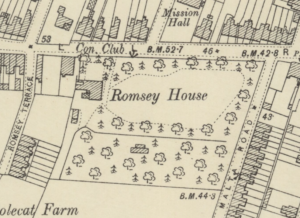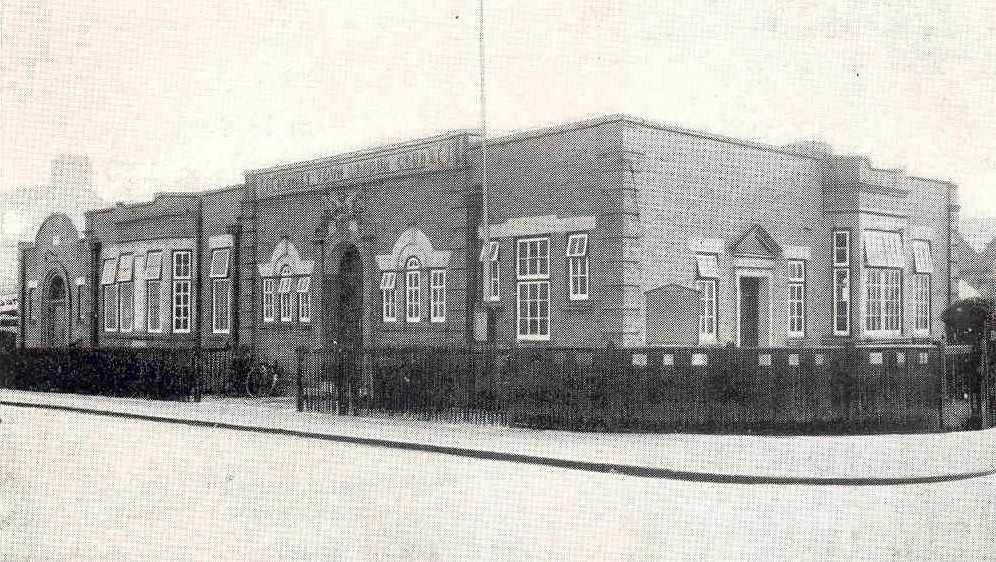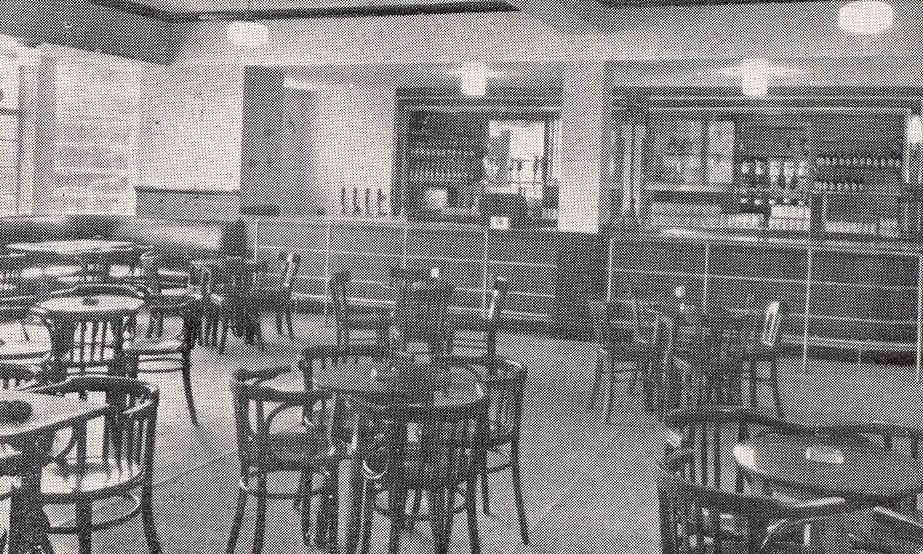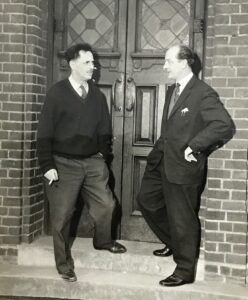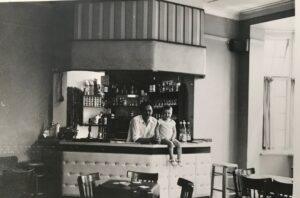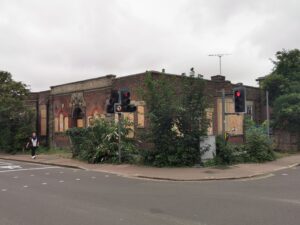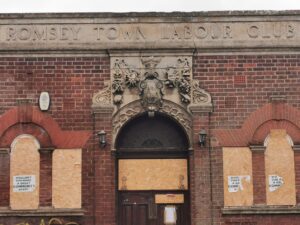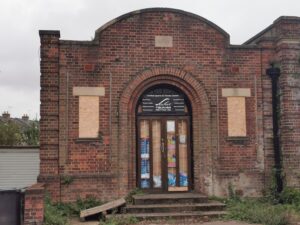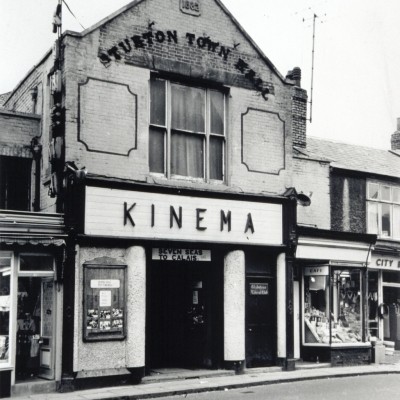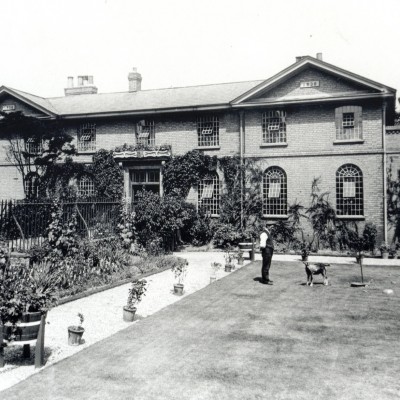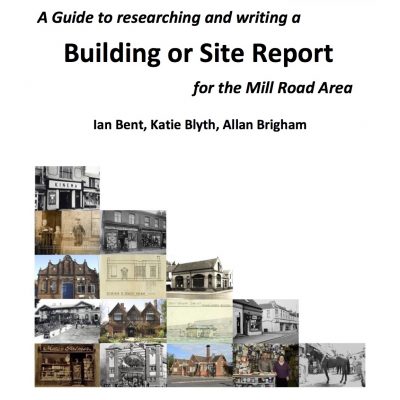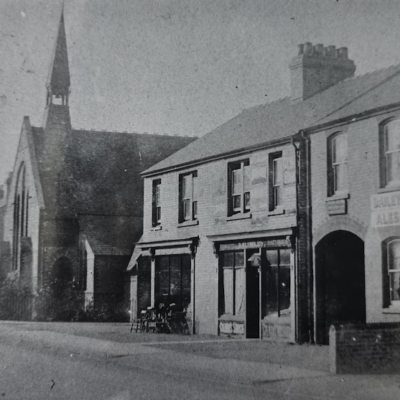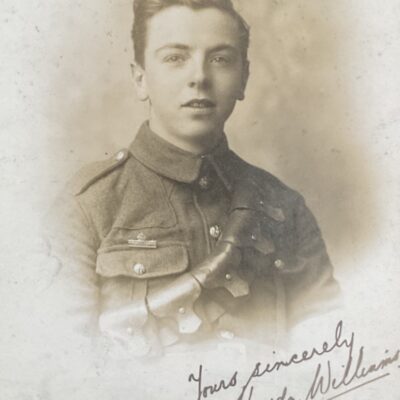Search by topic
- archaeology
- Building of Local Interest
- charity
- church
- crime
- dressmaker
- fire
- Great Eastern Railway
- Listed building
- Mapping Relief
- medieval
- oral history
- poverty
- Public House
- Rattee & Kett
- Religious House
- Roman
- scholar
- school
- Then and Now
- tudor
- women
- work
- world war one
- world war two
Search by text
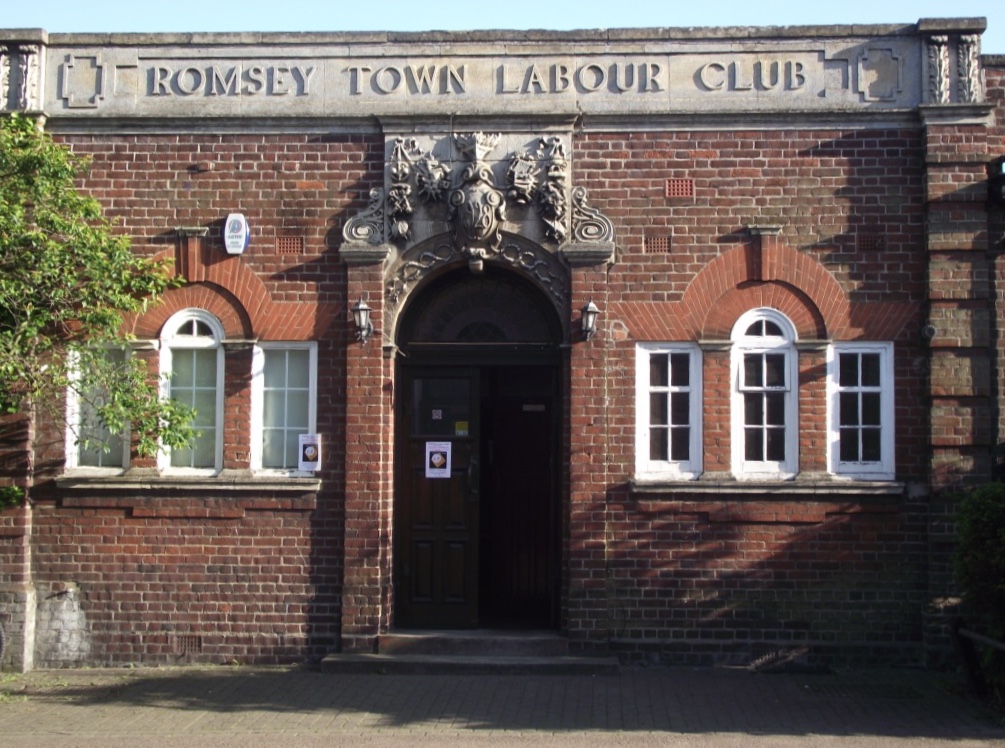 Mill Road History
Mill Road HistoryRomsey Labour Club, Mill Road
The home of the fledgling Labour movement in Cambridge
In 1913 the land between Romsey Avenue and Malta Road was described as being occupied by:
Building land
Romsey Council School: George Flavill headmaster; Alfred Wilkin, caretaker
Building land
Romsey Labour Club stands at the junction of Mill Road, Coleridge Road and Hemingford Road on the East side. Built by volunteers between 1925 and 1928, the simple but elegant redbrick exterior gives few clues to the importance of the venue as a meeting house and social centre for trade unions, cooperatives, societies and the local people of Romsey Town.
The hall itself has been vacant since 17 March 2014. As of summer 2015, the Tube gym occupied the east wing of the building, while the Thomas a Becket gym and boxing club was based in the west wing.
Read the complete building report (PDF)
Did you know
Ramsay MacDonald, the first Labour Prime Minister, laid the foundation stone in 1926.
The club includes a bar largely because building committee member William Briggs, later to become the first president, claimed that after his experience with a previous venture in Romsey Town he would never support another project which did not include one.
Building of the club was initially financed by selling £1 shares. 1100 were sold by July 1925 allowing building to be started.
The carving over the entrance way depicts the tools used by all the tradesmen who helped build the Club.
Timeline
1903 – land is part of the Romsey House estate
1912 – Cambridge Labour Party formed
1921 – plot purchased
1924 – planning permission granted
1925 – preparatory building work started
1926 – foundation stone lain
1928 – Club building opened
1932 – East extension built
1935 – card room and bar extended
1939 – requisitioned as a Community Feeding Centre and store, larger kitchen built
1947 – oak memorial unveiled
2014 – Club closed
Building Description
Inside the main Mill Road entrance was a small vestibule, which led directly into a small octagonal hall, panelled in oak, with entranceways to north, south, east and west. The left (east) entranceway, with door, led through to the billiard room, passing between the gents’ toilet and the bar. That to the right (west), with door, led into a spacious reading room extending to the back of the building. The hall has a door also on the north-west side that led into the ladies toilet. The entranceway straight ahead (south) led to a passageway with doors into the reading room on the right and the committee room on the left at the rear of the building. The bar area had a counter facing into this latter room and another facing into the billiard room.
In 1932 a new larger meeting room was built on the East side, the existing committee room becoming a lounge. In 1935, due to the popularity of the Club, the bar and card room were extended.
In his book Buildings of the Labour Movement, Nick Mansfield describes the building as “a modest brick building in a vaguely Queen Anne style” with a “’Wrenaissance’ structure” to its “handsome exterior (that) boasted two Venetian windows and (a) fine stone carving over the front door”.
Building History
The Cambridge Labour Party was formed in 1912 and initially decided to build its headquarters in Romsey Town due to the area’s left wing reputation. However after the plot of land had been purchased the Party decided to continue the search for an appropriate location and granted the land to the local party to build a club itself.
Due to the lack of funding volunteers gave up weekends and evenings to help build it. A stone on the front of the building to the left of the main entrance records the work that the members put into the building.
Once opened in 1928 many local organisations used it as their headquarters. It became an important location for railway unions, including ASLEF and the NUR, the local Co-operative Guild as well as other local Labour branch parties, including neighbouring Petersfield and Coleridge. Unusually, four women’s groups also made use of the facilities, and President Briggs emphasised that the Club was for the use of both sexes, no matter how ‛experimental’ this might be.
During the second World War the hall and kitchen were requisitioned. However, it was down to President Briggs that the entire property was not taken over by the authorities, as he pointed out that the Club could be used as a recreational centre for decommissioned troops and evacuated persons. The Club enjoyed a close relationship with soldiers beginning when the General Committee agreed unanimously that all members of the army were allowed free use of the Club, and free membership was given to the members who had joined His Majesty’s Forces. In 1947 Cambridge’s first Labour MP, Leslie Symonds, unveiled an oak memorial which remembered those who had fought for club and country.
Alderman William Layton Briggs
William ‘Billy’ Briggs (1876–1957) was a key figure in the history of the Labour Club and Cambridge as a whole. He was a railway worker from the age of 15, represented Romsey on the city council from 1920 to 1929, was Cambridge’s first Labour mayor in 1936 and was given an OBE for his work on the Civil Defence committee in World War II. He was one of the driving forces behind the building of the Club and was president from 1924 to 1945. He was well respected in Cambridge as an honest, hard working politician who never put party before service to the people. He was commemorated in 1984 by the building of Bill Briggs Court on Ross Street, near to Tom Amey Court, named after his friend and fellow alderman.
Jim Kell was the landlord at the Romsey Labour Club, around 1962-1966. Jim Kell had served in the military – 1935 to 1959 when he left with the rank of Staff Sergeant in the Royal Scots Greys. The family lived on the site until they moved to Pampisford in 1966. His son reminisced in 2020:
My father being hit over the head with a bar stool by a disgruntled customer.
The robber who my father chased out of the club, who ran out the back and jumped the 3ft wall to the rear into the next property, which was in fact a 6ft wall the other side. He broke his ankle and police came to take him away.
I remember the red leather wall benches in the main bar, the entrance and the war memorial.
There was a war veteran who had a hand lever operated wheel chair, who always chatted to us as kids and made jokes – ‘Cheep Cheep’ was his nick name.
2021
Further Information
Contribute
Do you have any information about the people or places in this article? If so, then please let us know using the Contact page or by emailing capturingcambridge@
License
This work is licensed under CC BY-NC-SA 4.0





